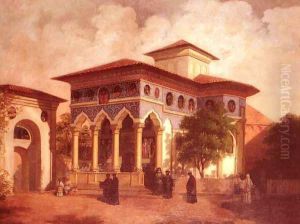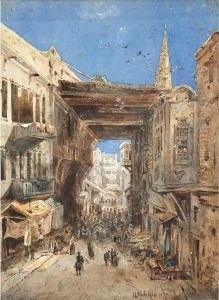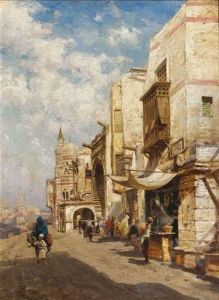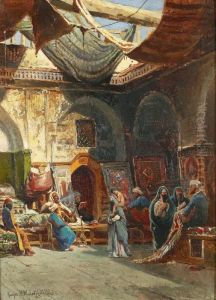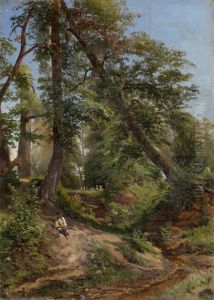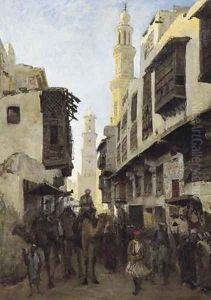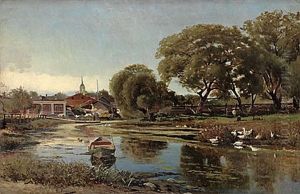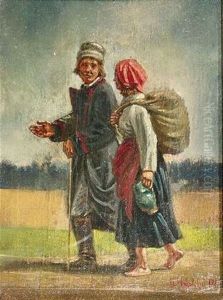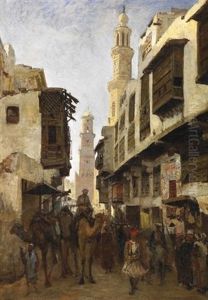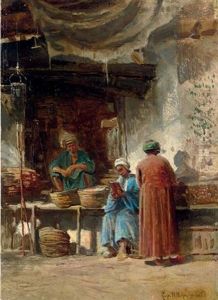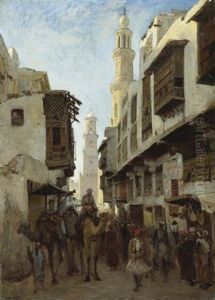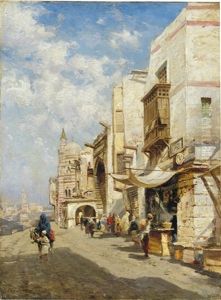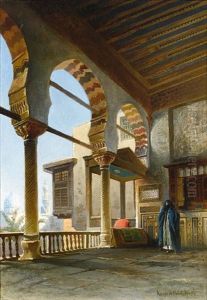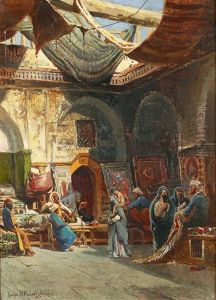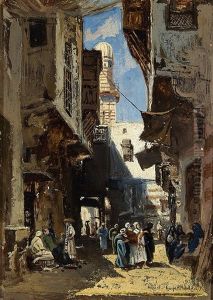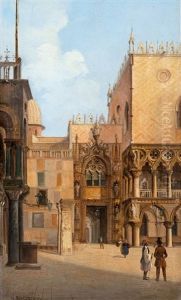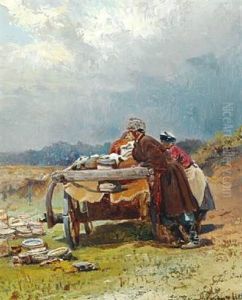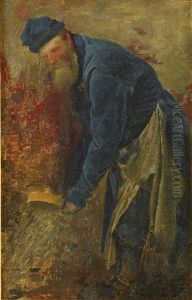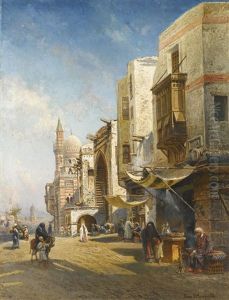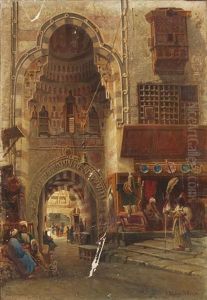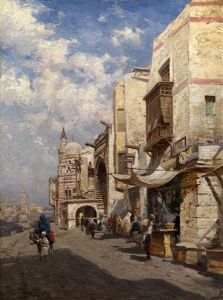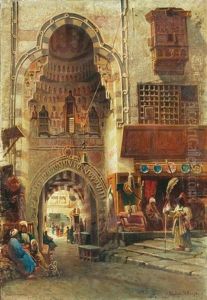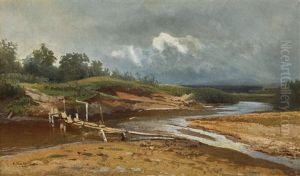Nikolai Egorovich Makovsky Paintings
Nikolai Egorovich Makovsky was a prominent Russian painter associated with the Russian Realist movement, born on April 6, 1842, in Moscow. He was part of the illustrious Makovsky family of artists, with his brothers Vladimir and Konstantin Makovsky also being celebrated painters of their time. Nikolai's artistic journey was deeply influenced by his father, Egor Ivanovich Makovsky, a noted art collector and amateur painter, who fostered an environment rich in art and culture. This early exposure played a pivotal role in shaping Nikolai's artistic sensibilities and his future career. He received his formal education at the Moscow School of Painting, Sculpture and Architecture, where he was introduced to the principles of Realism, a style that would define much of his work.
Makovsky's artistic oeuvre is characterized by its focus on historical and social themes, often depicting the everyday lives of Russian people with a profound depth of emotion and realism. He was particularly adept at using light and color to enhance the narrative quality of his paintings, a technique that earned him widespread acclaim. His works were not only celebrated in Russia but also gained recognition abroad, particularly in Western Europe, where he participated in numerous exhibitions.
Besides his contributions to painting, Nikolai Egorovich Makovsky played a significant role in the Russian art scene as a member of various art societies, including the Peredvizhniki (The Wanderers or The Itinerants), a cooperative of realist artists who sought to engage directly with the public by traveling and exhibiting their works across Russia. This movement was critical in challenging the academic restrictions of the time, promoting a more democratic approach to art.
Makovsky's commitment to realism and his ability to capture the essence of Russian life and history left a lasting legacy in Russian art. He continued to paint and exhibit his work until his late years, passing away on February 21, 1915, in St. Petersburg. His artworks remain highly regarded and are featured in major museums and collections worldwide, testament to his enduring influence on the art world.
